Featured Articles
Want Pacquiao Vs. Bradley? Cotto? Peterson? Marquez? Weigh-In!…WOODS
 I’d like the year in boxing 2012 to be remembered, at least partially, as the year of the fan. I’d like to toss the ball in your court, and take advantage of your collective wisdom, because frequently, you guys have a superior take on a situation, and use better judgment than a lot of us “experts” do. We get clouded by our biases, and suits get clouded by business interests, but the fans can keep a clearer head, and thus, their input is typically unclouded as a result.
I’d like the year in boxing 2012 to be remembered, at least partially, as the year of the fan. I’d like to toss the ball in your court, and take advantage of your collective wisdom, because frequently, you guys have a superior take on a situation, and use better judgment than a lot of us “experts” do. We get clouded by our biases, and suits get clouded by business interests, but the fans can keep a clearer head, and thus, their input is typically unclouded as a result.
With that preamble dispensed, I’d like your take on the Big Four, the four gentlemen who are in line to play a Manny Pacquiao scratch ticket.
You probably heard, via ABS-CBN, that promoter Bob Arum will be headed to the Philippines next week, and by January 10 or so, will have sat down with the Congressman, and discussed four foes that Top Rank has chosen to be suitable opponents for Manny in his first 2012 bout, presumably in May.
In alphabetic order, Tim Bradley, Miguel Cotto, Juan Manuel Marquez and Lamont Peterson are the names mentioned by Arum as folks who will get a crack at Pacquiao.
If you’d have thrown those names against the wall last year at this time, you would have received vastly different responses than you will now. First and foremost, in January of 2011, Pacquiao was coming off a slaughter of Antonio Margarito. Then he met Shane Mosley, and then Juan Manuel Marquez, and perceptions of Pacquiao changed. Not in every camp, mind you. Some folks will tell you that Manny is still Manny, the same Manny who he was in January 2011. They’ll say that Mosley simply fought to survive and there was no way, shape or form that Pacquiao could have looked like a million bucks in Las Vegas against track star Mosley. Those folks will say that Manny had an off night against Marquez on Nov. 12, that he quite likely overtrained, and that Marquez fought the fight of his life. But many of those same folks also concede that Pacquiao is better suited to fighting a certain sort of foe, that the more slippery boxers, the more agile hitters, and the master craftsman, give him problems.
In January 2011, people would have said that Marquez is past his prime, and won’t thrive at welterweight, because after all, look how he did at that class when he tangled with Floyd Mayweather? So maybe people wouldn’t have put him first on the list among the four proposed foes…
Cotto wouldn’t have gotten all that much love, considering he had a shot at Pacquiao in November 2009, and didn’t get any traction enroute to a TKO12 loss.
In January 2011, the level of love for Tim Bradley would have been roughly the same. The junior welter had come off an OK showing at welter in July 2010, with a UD12 over Luis Abregu, after snagging another UD12 over Lamont Peterson and getting into a managerial-promotional entanglement. There were those who would’ve said back then a year ago they’d like to see his volume and pressure against Manny’s volume and pressure. Also, people who wanted Manny to fight someone other than an ultra-vet liked the idea of a young ‘un (then 27) getting a crack..
As for Lamont Peterson, in January 2011, his name would’ve had people hooting. He’d drawn with Victor Ortiz in December 2010, after losing to Bradley one year before. The DC-boxer’s buzz was not present and one wondered if he’d simply be one of those solid sorts who would never beat an ‘A’ grade boxer. The hooting and the wondering stopped on December 10 of this year, when he elevated his game a hefty step, fighting passionately and effectively against Amir Khan. Peterson got the W, with some friendly officiating and appreciative judges watching in his home state, but even if he hadn’t, his stock ticked up hard. And that’s why I’d maybe be most intrigued to see Pacquiao-Peterson, of all those potential matches.
Peterson is a relative pup; he’d be 28 next May. How would the 33 and a half year old Pacquiao handle the energy of the Khan conqueror? Would he use Peterson’s aggression against him, or would those strafing body shots take something from Pacquiao’s legs early on?
I’d also be happy to pony up for the PPV to see if Manny could tweak his game to see a better result against Marquez, in their fourth tangle. But this series has now turned into something like the “Rocky” series; still capable of great moments, but a smidge of staleness has set in. One should probably factor in that Marquez “deserves” another crack at Pacquiao, seeing as how so many people thought he got Madoff’d in their third clash.
Pacquiao-Cotto II is a more interesting matchup after Dec. 3, 2011 than it was before, because Cotto truly looked like an improved pugilist, like someone who was engaged with the sport again, like a person who once again liked boxing. His newfound zest for combat, combined with Pacquiao’s (possible) deterioration makes the rematch a closer-to-even proposition, and a sellable entity for Arum.
I’m least interested in Pacquiao-Bradley, as I’d like to see Bradley raise his game before getting this lotto play. I respect the heck out of his talent, especially his stamina, but he is so one dimensional that I’m afraid a fight with him and Pacman wouldn’t generate much heat in the months leading up to it. How about Bradley meet and beat Peterson, with the winner to get Pacquiao down the line? Or if Peterson’s not game, how about Bradley and Amir Khan get it on, again, with the prospect of a Pacquiao payday hanging over the scrap?
That’s my riff on the Big Four. Readers, leave a comment in our Forum, and slot who you’d like Manny to meet, first to fourth. Perhaps Mr Arum will log on to TSS, and do a little market research before he checks in with the Congressman. We are hoping that he is down with our hopeful notion that 2012 will go down as the year of the fan..
-
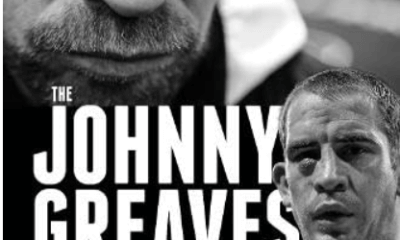
 Featured Articles3 weeks ago
Featured Articles3 weeks agoThomas Hauser’s Literary Notes: Johnny Greaves Tells a Sad Tale
-
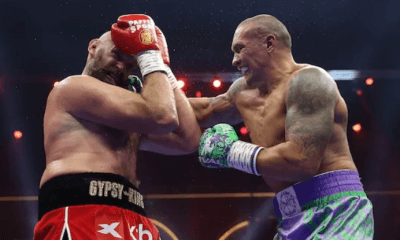
 Featured Articles2 weeks ago
Featured Articles2 weeks agoBoxing Notes and Nuggets from Thomas Hauser
-
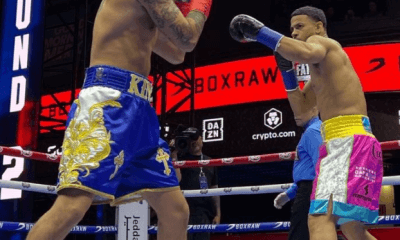
 Featured Articles4 weeks ago
Featured Articles4 weeks agoRolly Romero Upsets Ryan Garcia in the Finale of a Times Square Tripleheader
-
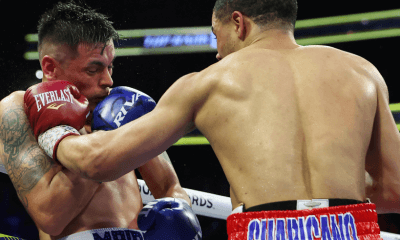
 Featured Articles4 weeks ago
Featured Articles4 weeks agoUndercard Results and Recaps from the Inoue-Cardenas Show in Las Vegas
-
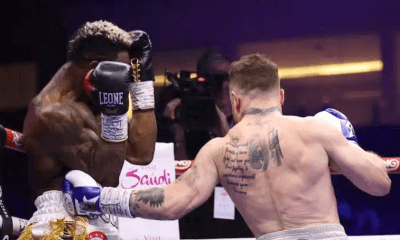
 Featured Articles4 weeks ago
Featured Articles4 weeks agoCanelo Alvarez Upends Dancing Machine William Scull in Saudi Arabia
-
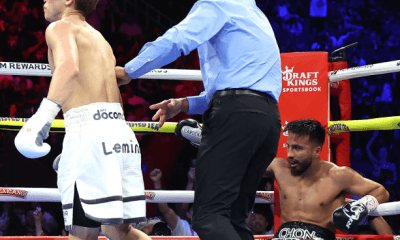
 Featured Articles4 weeks ago
Featured Articles4 weeks agoBombs Away in Las Vegas where Inoue and Espinoza Scored Smashing Triumphs
-
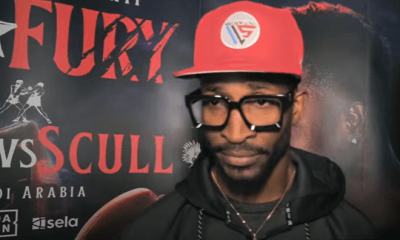
 Featured Articles4 weeks ago
Featured Articles4 weeks agoArne’s Almanac: The Good, the Bad, and the (Mostly) Ugly; a Weekend Boxing Recap and More
-
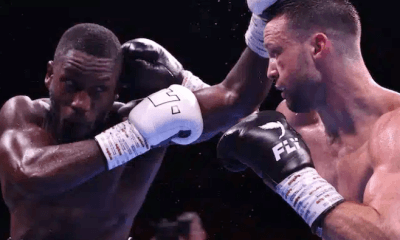
 Featured Articles1 week ago
Featured Articles1 week agoEkow Essuman Upsets Josh Taylor and Moses Itauma Blasts Out Mike Balogun in Glasgow



















